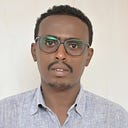Ethiopia’s Mentality to Celebrate the Achievement of SDG 4 with the Exclusion of Its Marginalised Regional States
The much-celebrated Sustainable Development Goals 4 (SGD4) is one of the Sustainable Development Goals (SDG) that the United Nations adopted for the target date 2030 almost 5 years ago. At its core S are the 17 sustainable Development Goals (SDG), which are urgent calls for action by all countries developed and developing in a global partnership. In these 17 Goals, SDG 4 is the education Goal that countries will have to reach for the 2030 agenda.
SDG4- Ensure Inclusive and equitable quality education and promote lifelong learning opportunities for all.
Ethiopia is among the countries that are required to achieve this goal with the inclusion of all disadvantaged groups; which is in the Ethiopian context the developing regional states like Somali, Binshangul-Gumuz, Afar, and Gambella. The Hight-Level Political Forum (HLPF) that opened in New York on July 9, 2019, was intended to review the progress and challenges of the SDG agendas of 2030 including SDG 4 and continued until July 18. Ahead of this forum, UNESCO projections show countries are off-track in meeting their education commitments for 2030. The International community recognized that to achieve agenda 2030, the collective work of all developed and developing countries is necessary so that leaving no one behind will be ruled out altogether.
At this Forum, the IntranationalCommunity was very supportive of the Least Developed Countries (LCDs) and Land Locked Developing Countries (LLDCs) to reach their targets without any exclusion. Ethiopia is one of the LDCs and LLDCs and this shows how the United Nations policies and the regulations of economically advanced countries are determined to leave no country behind. The International Community’s combined efforts of bridging the gap are much appreciated and their dedication to stand with countries like Ethiopia is worth applauding.
If the world is concerned about Ethiopia like that, Ethiopia, to benefit immensely from such humanitarian initiatives, was supposed to support its marginalized Regional States to achieve the SDG 4 together with the Big four Regions notably Amhara, Oromia, Southern Nations, and Nationalities PeoplesRepublic and Tigray regions that make EPRDF coalition, but that is not happening here in Ethiopia up to date because the HLPF19 is not willing to change to better the living conditions of the most affected communities.
Ethiopia’s concern of its developing regional states is not making headlines off the Ethiopian policymakers and any Sector reviews that are happening within the country because, either these regions are excluded in this kind of forums or they have no representation at the top leadership where policies are formulated or cooked. These regions are orphaned by the policy that favours only the big four Regions.
The equity and equality in the education sector remain high; the big four regions take the lion share of every single Ethiopian Birr that is collected from the country’s revenue and donations too. This is because the policy favours them or just because they are misleading these poor regions. The nation’s misguided policy allocates more than 90% for these big four regions not to mention the aid of the small money that some donors earmarked for these DRSs to lift them out of the dust. At times, people who look at the cases of these regions doubt that even the Millennium Development Goals of 2030 are properly implemented here. Irritating indeed!
For example, when a donor donates an Education project that deals with Access to Education- we know where access is a problem.
In principle, we know that education is a fundamental human right. We know that without it, the lives of these disadvantaged regions and indeed Ethiopia, in general, could diminish if corrective measures are not implemented to overturn the discombobulating political, social, and economic injustices. However, any collective progress these big four EPRDF regions made over the years to get millions of more students into the classroom is a cause for celebration. But with so many challenges remaining to fix in the country–from concerns about whether regions of this coalition are leaning to the educational exclusion of so many underprivileged children in the emerging regional states yet–there is no room for compliancy rather will be shame on Ethiopia’s Federal Government. I think they are aware. Who knows?
Therefore, I am concluding my piece and want to send my message to the United Nations Central platform that reviews the 2030 agendas including this education goal request the detailed report of the SDG 4 regional states and send independent evaluators for the 2030 agenda. Doing so will help you to witness all efforts you do to support LandLocked Developing and other Least Developed Countries are fruitful. It will also allow you to see if the Ethiopian Government is ready or not ready to implement the required agendas and whether it’s an open-door policy for the poor regional states is on course. In the meantime, now and onwards, after this HLPF, you will need to track the progress on education in a more detailed manner up to the villages of these impoverished and marginalized regions.
This article appeared first on SDM.
